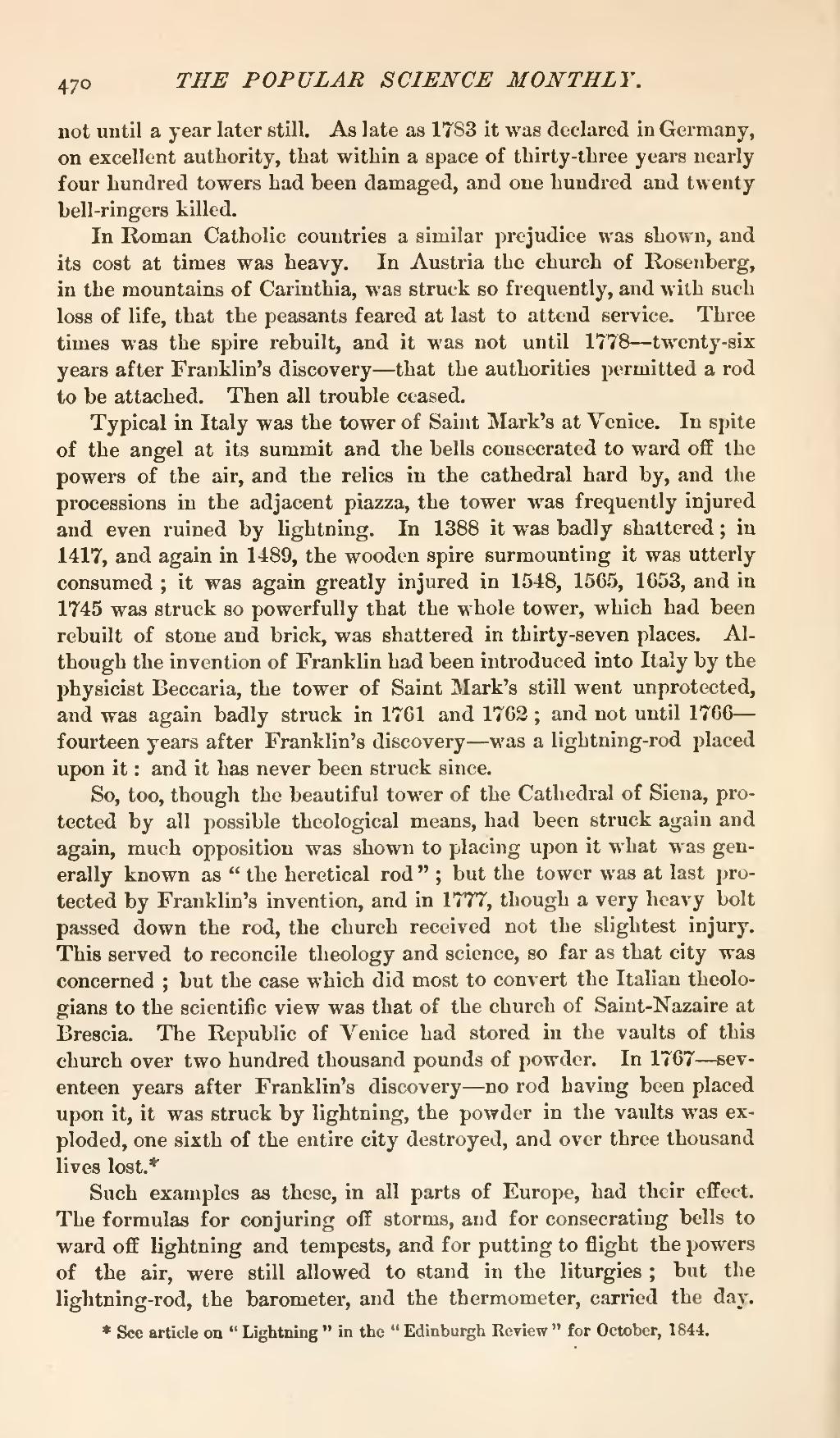not until a year later still. As late as 1783 it was declared in Germany, on excellent authority, that within a space of thirty-three years nearly four hundred towers had been damaged, and one hundred and twenty bell-ringers killed.
In Roman Catholic countries a similar prejudice was shown, and its cost at times was heavy. In Austria the church of Rosenberg, in the mountains of Carinthia, was struck so frequently, and with such loss of life, that the peasants feared at last to attend service. Three times was the spire rebuilt, and it was not until 1778—twenty-six years after Franklin's discovery—that the authorities permitted a rod to be attached. Then all trouble ceased.
Typical in Italy was the tower of Saint Mark's at Venice. In spite of the angel at its summit and the bells consecrated to ward off the powers of the air, and the relics in the cathedral hard by, and the processions in the adjacent piazza, the tower was frequently injured and even ruined by lightning. In 1388 it was badly shattered; in 1417, and again in 1489, the wooden spire surmounting it was utterly consumed; it was again greatly injured in 1548, 1565, 1653, and in 1745 was struck so powerfully that the whole tower, which had been rebuilt of stone and brick, was shattered in thirty-seven places. Although the invention of Franklin had been introduced into Italy by the physicist Beccaria, the tower of Saint Mark's still went unprotected, and was again badly struck in 1761 and 1762; and not until 1766—fourteen years after Franklin's discovery—was a lightning-rod placed upon it: and it has never been struck since.
So, too, though the beautiful tower of the Cathedral of Siena, protected by all possible theological means, had been struck again and again, much opposition was shown to placing upon it what was generally known as "the heretical rod"; but the tower was at last protected by Franklin's invention, and in 1777, though a very heavy bolt passed down the rod, the church received not the slightest injury. This served to reconcile theology and science, so far as that city was concerned; but the case which did most to convert the Italian theologians to the scientific view was that of the church of Saint-Nazaire at Brescia. The Republic of Venice had stored in the vaults of this church over two hundred thousand pounds of powder. In 1767—seventeen years after Franklin's discovery—no rod having been placed upon it, it was struck by lightning, the powder in the vaults was exploded, one sixth of the entire city destroyed, and over three thousand lives lost.[1]
Such examples as these, in all parts of Europe, had their effect. The formulas for conjuring off storms, and for consecrating bells to ward off lightning and tempests, and for putting to flight the powers of the air, were still allowed to stand in the liturgies; but the lightning-rod, the barometer, and the thermometer, carried the day.
- ↑ See article on "Lightning" in the "Edinburgh Review" for October, 1844.
